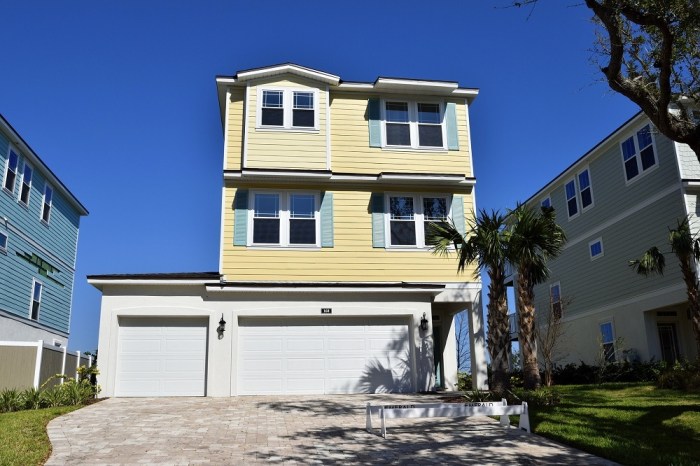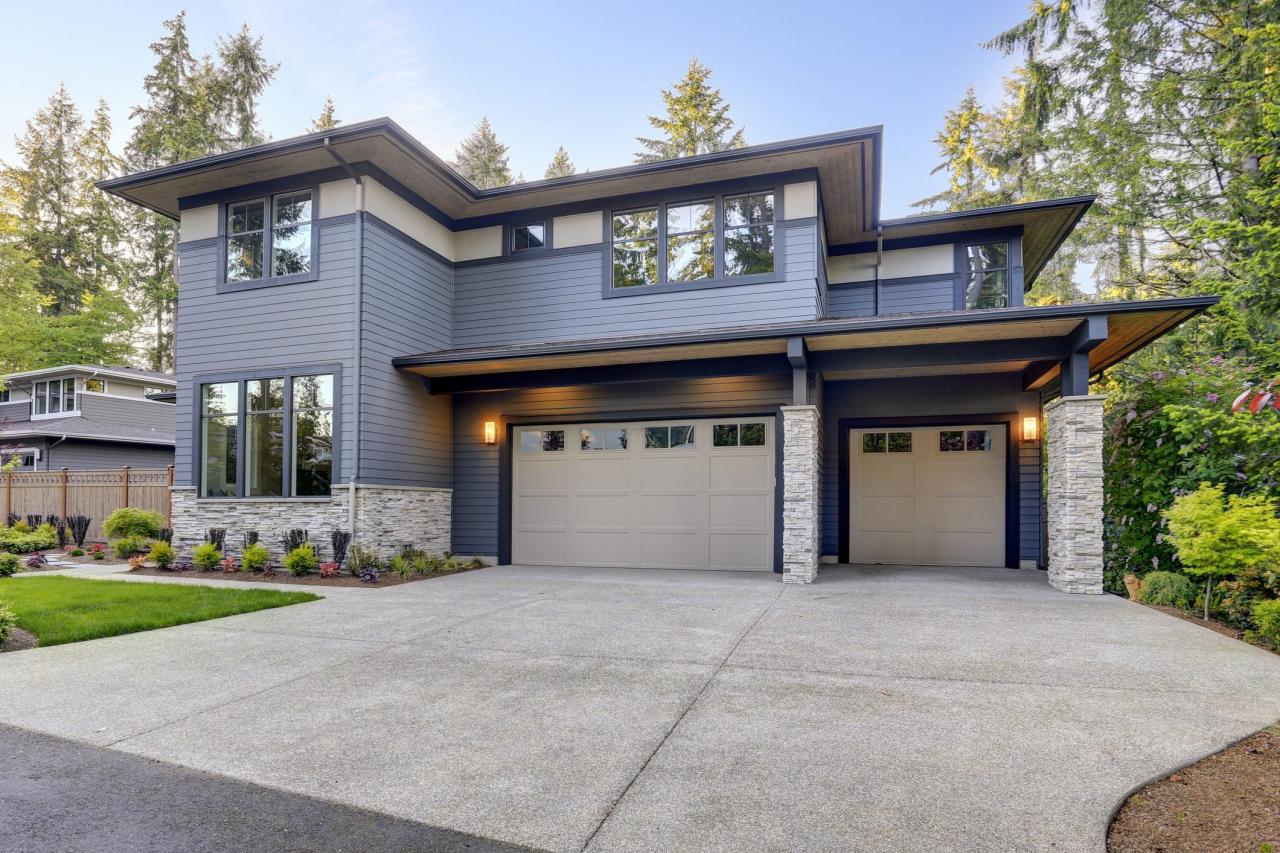Is Aluminum Siding Ideal for Coastal Homes? That’s the burning question for many homeowners facing the salty air and harsh weather of coastal living. Choosing the right siding isn’t just about aesthetics; it’s about protecting your investment from the elements and ensuring long-term durability. We’ll dive deep into the pros and cons of aluminum siding in coastal environments, exploring its resilience, cost-effectiveness, and environmental impact to help you make an informed decision.
From battling relentless salt spray to withstanding hurricane-force winds, your siding needs to be a true champion. This deep dive examines aluminum siding’s performance in coastal conditions, comparing it to other popular options like vinyl and fiber cement. We’ll weigh the initial costs against long-term maintenance, explore the aesthetic considerations, and even discuss the environmental implications. Get ready to discover if aluminum siding is the perfect shield for your seaside sanctuary!
Aesthetic Considerations of Aluminum Siding in Coastal Homes

Choosing the right siding for a coastal home involves a careful balancing act between durability and aesthetics. Aluminum siding, known for its resilience against harsh weather, offers a surprisingly versatile range of aesthetic options, allowing homeowners to achieve various design goals while protecting their investment. However, understanding how color, finish, and architectural style interact with the coastal environment is crucial for a successful outcome.
Aluminum Siding Colors and Finishes in Coastal Environments
The coastal environment presents unique challenges to exterior finishes. Salt spray, sun exposure, and strong winds can accelerate weathering and fading. Therefore, selecting durable colors and finishes is paramount. Darker colors, while aesthetically pleasing, tend to absorb more heat, potentially leading to accelerated fading. Lighter colors, conversely, reflect sunlight, prolonging their lifespan.
Powder-coated finishes offer superior protection against corrosion and chipping compared to painted finishes, making them a more suitable choice for coastal homes. Finishes with a higher gloss level also tend to be more resistant to fading. For instance, a high-gloss white or a light gray with a durable powder coating would likely outperform a matte dark blue in terms of longevity and aesthetic preservation.
Design Elements Affecting the Appeal of Aluminum Siding
While aluminum siding is inherently durable, its aesthetic impact depends heavily on the design elements incorporated into the overall home’s exterior. Clean lines and simple architectural details complement aluminum siding’s modern appeal, creating a sleek and sophisticated look. Conversely, overly ornate detailing can clash with the siding’s relatively smooth surface. The use of contrasting trim colors, window styles, and landscaping elements can significantly enhance the visual appeal.
For example, strategically placed shutters or carefully chosen window frames can add visual interest and break up large expanses of siding. Conversely, poorly matched trim colors or outdated window styles can detract from the overall aesthetic, making the home appear dated or disjointed.
Architectural Styles Suitable and Unsuitable for Aluminum Siding
The suitability of aluminum siding depends largely on the architectural style of the coastal home.
- Suitable Styles: Modern, Contemporary, Ranch, Cape Cod (with careful consideration of color and trim).
- Less Suitable Styles: Victorian, Craftsman, Colonial (often require more textured and detailed siding materials to maintain historical accuracy).
Aluminum siding’s clean lines and versatility make it a good fit for modern and contemporary styles. However, for homes with intricate details typical of Victorian or Craftsman architecture, the smooth surface of aluminum siding may appear out of place, potentially detracting from the home’s historical character. While aluminum siding can be adapted for Cape Cod style homes, careful color and trim selection is necessary to maintain the charm of this classic architectural style.
Reflectivity of Aluminum Siding and Interior Temperature, Is Aluminum Siding Ideal for Coastal Homes?
Aluminum siding’s high reflectivity significantly impacts the interior temperature of a coastal home, particularly in regions with intense sunlight. The reflective properties of the material help to reduce heat absorption, keeping the interior cooler during the hot summer months. This translates to lower energy consumption from air conditioning, leading to potential cost savings. For example, a home with light-colored aluminum siding in a sunny coastal location might experience a noticeable difference in interior temperature compared to a home with dark-colored wood siding.
The difference can be especially pronounced during peak sun hours. This reduction in heat gain is a significant advantage, especially in regions prone to extreme heat and humidity.
Array
Aluminum siding’s lightweight yet surprisingly strong nature makes it a compelling option for coastal homes facing hurricane threats. Its resilience against high winds and flying debris is a significant advantage in protecting the structural integrity of a house during a storm. This section will delve into the specifics of how aluminum siding performs under extreme weather conditions and the factors that influence its effectiveness.Aluminum siding’s strength and resilience contribute significantly to hurricane protection.
Unlike some materials that can easily crack or shatter under extreme pressure, aluminum’s flexibility allows it to bend and withstand strong winds without substantial damage. This inherent flexibility minimizes the risk of the siding being ripped off the house, a common occurrence with other materials during hurricanes. The material itself is also resistant to corrosion, which is crucial in a coastal environment constantly exposed to salt spray and moisture.
This resistance to rust and deterioration ensures long-term performance, even after repeated exposure to harsh weather.
Aluminum Siding Performance Compared to Other Materials
Aluminum siding consistently outperforms many other materials in high winds and extreme weather. For example, wood siding is susceptible to water damage, rotting, and insect infestation, significantly weakening its structural integrity during a hurricane. Vinyl siding, while relatively inexpensive, can be easily damaged by strong winds and flying debris, often cracking or tearing. Fiber cement siding, although durable, is heavier and more brittle than aluminum, making it more prone to shattering under extreme impact.
In contrast, aluminum’s lightweight and flexible nature, coupled with its inherent strength, allows it to better withstand the forces of a hurricane. Proper installation is key to maximizing the benefits of any siding material; however, aluminum’s inherent properties give it a significant edge in hurricane-prone areas.
Proper Installation for Maximized Hurricane Resistance
The success of aluminum siding in protecting a coastal home during a hurricane is heavily dependent on proper installation techniques. This includes using high-quality fasteners, ensuring proper overlapping of panels to prevent wind penetration, and employing effective sealing techniques to prevent water ingress. Neglecting these aspects can compromise the integrity of the siding, even if the material itself is highly resistant.
For instance, improperly installed aluminum siding can allow wind to penetrate behind the panels, potentially causing damage to the underlying structure. Similarly, inadequate sealing can lead to water infiltration, resulting in damage and potential structural weakening. Professional installation by experienced contractors is highly recommended to ensure the siding performs optimally during severe weather events.
Successful Applications of Aluminum Siding in Hurricane-Prone Areas
Numerous coastal communities in hurricane-prone regions have successfully utilized aluminum siding for years. The proven performance of aluminum siding in these areas reinforces its suitability for hurricane-resistant construction.
- Gulf Coast, USA: Many homes in Florida, Louisiana, and Texas, areas frequently impacted by hurricanes, utilize aluminum siding. Its resilience has been repeatedly demonstrated in the aftermath of major storms.
- Caribbean Islands: Island nations regularly hit by hurricanes frequently incorporate aluminum siding in their building codes, recognizing its effectiveness in mitigating storm damage.
- Southeast Asia: Coastal communities in countries like Vietnam and the Philippines, prone to typhoons, also employ aluminum siding in residential and commercial construction due to its ability to withstand strong winds and heavy rainfall.
So, is aluminum siding the right choice for your coastal home? The answer, as with most things in life, isn’t a simple yes or no. While it offers impressive durability and hurricane resistance, careful consideration of initial costs, long-term maintenance, and aesthetic preferences is crucial. Weighing the pros and cons—from its ability to withstand salt corrosion to its potential environmental impact—will empower you to make a decision that best suits your needs and budget.
Ultimately, the perfect siding is the one that provides the best protection and complements your coastal lifestyle.
FAQ Resource: Is Aluminum Siding Ideal For Coastal Homes?
Can aluminum siding rust in a coastal environment?
While aluminum is naturally resistant to rust, prolonged exposure to salt spray can accelerate corrosion. Properly coated aluminum siding is less susceptible to this, however.
How does aluminum siding impact home insurance premiums?
Some insurance companies may offer slight discounts for homes with durable siding like aluminum, especially in hurricane-prone areas. However, this varies widely by insurer and location.
What about the noise levels with aluminum siding during storms?
Aluminum siding can be quite noisy during heavy rain or hailstorms compared to some other materials. This is due to its relatively thin and rigid nature.
Is aluminum siding recyclable?
Yes, aluminum siding is highly recyclable, making it a more environmentally friendly option compared to some other materials that end up in landfills.
Obtain direct knowledge about the efficiency of Insulated Siding Key to Energy-Efficient Homes through case studies.